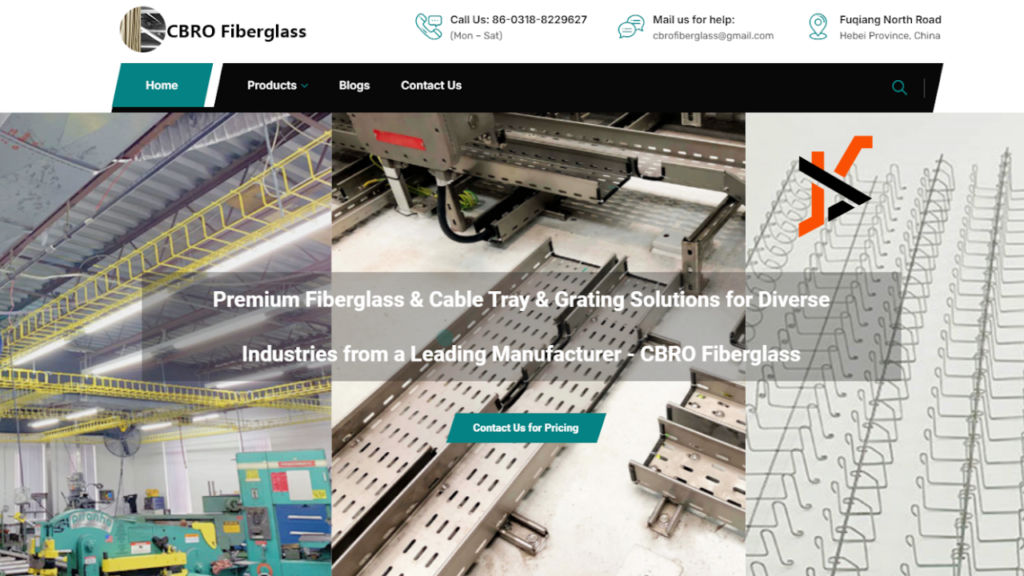Fiberglass sheets are a cornerstone of modern construction and industrial applications, prized for their strength, durability, and versatility. These sheets are typically made from woven layers of glass fibers, which are then bonded with resin to form a robust composite material. The integration of enhancements such as chopped strand mat not only boosts their structural integrity but also makes them exceptionally suitable for complex installations. For instance, in cable ladder systems, the added strength from the chopped strand mat ensures that the fiberglass sheets can handle heavier loads and resist environmental stresses more effectively. This combination of flexibility and durability makes fiberglass sheets an indispensable material in settings that demand robustness and longevity.
Composition of Fiberglass Sheets
Fiberglass sheets are composed of woven fibers of glass that are bonded together with various types of resin, typically polyester, vinyl ester, or epoxy. In some applications, these sheets are further reinforced with materials like chopped strand mat to enhance their structural integrity and impact resistance. This combination of glass fibers, resin, and additional reinforcements like chopped strand mat results in a composite material that exhibits high strength-to-weight ratios and excellent durability. The glass fibers provide essential structural strength, while the resin encapsulates the fibers, helping to maintain the shape of the sheet and contributing to the material’s resistance to environmental factors.
Manufacturing Process
The manufacturing process of fiberglass sheets involves several key steps:
- Glass Melting: The process begins with melting silica sand, limestone, kaolin clay, fluorspar, colemanite, dolomite, and other minerals to form glass.
- Fiberizing: The molten glass is then extruded through fine holes to create fibers. This process may vary, with some fibers being drawn, blown, or even spun.
- Binding: The fibers are laid down or woven into sheets and then bonded with a resin. The resin is applied either through spraying or in baths where the fibers are completely saturated.
- Curing: The resin-saturated sheets are then cured in ovens to harden the resin, setting the material into its final rigid form.
Properties
Fiberglass sheets exhibit several notable properties:
- High Tensile Strength: The tensile strength of fiberglass sheets makes them suitable for demanding structural applications where other materials might fail.
- Corrosion Resistance: Unlike metals, fiberglass does not corrode, making it ideal for harsh environments, including chemical exposure or saltwater.
- Thermal Insulation: Fiberglass provides excellent thermal insulation, which is why it is often used in building construction and industrial applications.
- Electrical Insulation: Its non-conductive nature makes fiberglass a safe choice for electrical and electronic applications.
- Lightweight: Fiberglass is much lighter than metal alternatives, providing benefits in applications where weight reduction is critical, such as in the automotive and aerospace industries.
Challenges and Considerations
Despite its advantages, working with fiberglass sheets comes with its challenges. Cutting and handling fiberglass can release small fibers that are harmful if inhaled or if they come into contact with the skin, necessitating proper safety precautions during handling and machining. Additionally, while fiberglass is durable, it can be brittle and prone to cracking under impact, which may limit its use in some high-impact applications.
Applications of Fiberglass Sheets
Building Construction
In the construction industry, fiberglass sheets are extensively used due to their durability and resistance to environmental factors like moisture, chemicals, and temperature fluctuations. They are commonly employed in facade panels which enhance building aesthetics while offering protective barriers against weather elements. Fiberglass is also a preferred material for roofing sheets because of its translucency, allowing natural light while providing insulation.
Automotive Industry
The automotive sector benefits significantly from the use of fiberglass sheets, primarily due to their lightweight nature which contributes to enhanced fuel efficiency. They are widely used in the manufacture of vehicle body parts such as bumpers, dashboards, and body panels. The flexibility of fiberglass allows for aerodynamic designs that are difficult to achieve with more rigid materials like steel.
Marine Applications
Fiberglass sheets are pivotal in the marine industry, prized for their imperviousness to rust and decay. They are ideal for constructing boat hulls and other structural components exposed to harsh marine environments. The integral strength of fiberglass ensures that vessels maintain integrity and buoyancy even under the stress of continual water exposure.
Cable Ladder Systems
In industrial settings, fiberglass sheets serve as crucial components in cable ladder systems, providing a sturdy yet lightweight pathway for managing and protecting electrical cables and wiring. The non-conductive nature of fiberglass adds an additional layer of safety, preventing electrical hazards in environments where metal systems could pose a risk of shorts or sparks.
Industrial Barriers and Enclosures
Fiberglass sheets are often fashioned into protective barriers and enclosures in factories and plants. These applications benefit from fiberglass’s resistance to chemicals and heat, making them ideal for isolating hazardous areas or equipment. For example, protective guards around machinery or chemical storage units help ensure worker safety and compliance with health and safety regulations.
Architectural and Decorative Uses
Beyond functional applications, fiberglass sheets are also valued for their aesthetic versatility. They can be textured, colored, or shaped to fit bespoke design specifications, making them popular in decorative panels, lighting fixtures, and custom furniture. Architects and designers leverage these qualities to bring unique and creative visions to life, blending functionality with style.
Installation Tips and Best Practices
- Guidelines on how to handle and install fiberglass sheets effectively, ensuring compatibility with additional structures like cable ladders.
- Tips on incorporating materials such as chopped strand mat during installation to enhance the structural integrity and performance of the fiberglass sheets.
Purchasing Guide
- Advice on selecting the right type of fiberglass sheet for different projects, considering factors like size, thickness, and specific resistance properties (e.g., UV, chemical).
- Suggestions for choosing fiberglass sheets that are pre-enhanced with materials like chopped strand mat for applications requiring extra durability, such as in parts of cable ladder.

